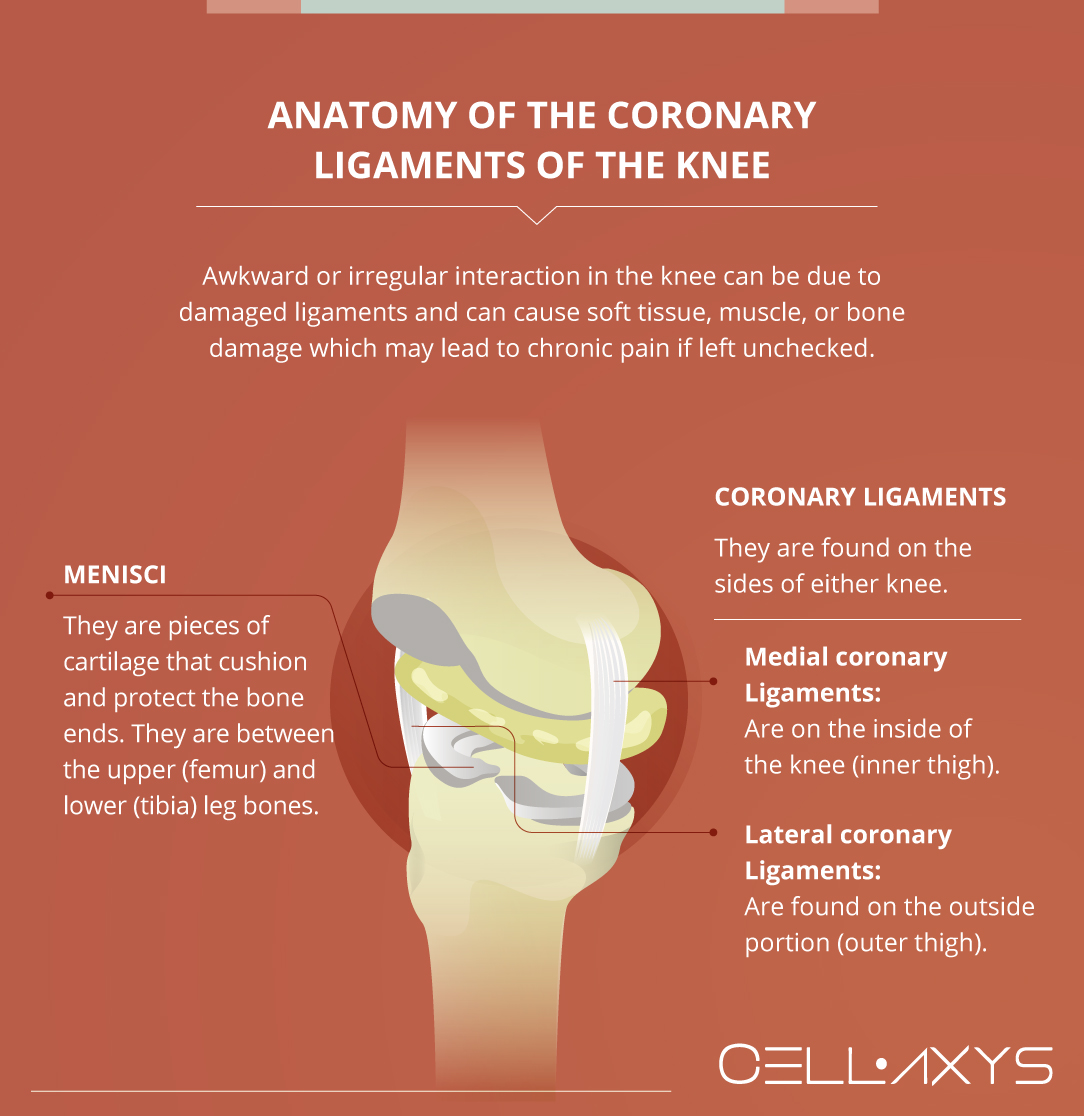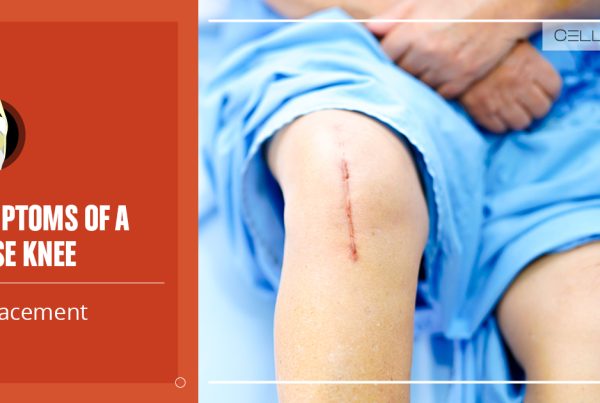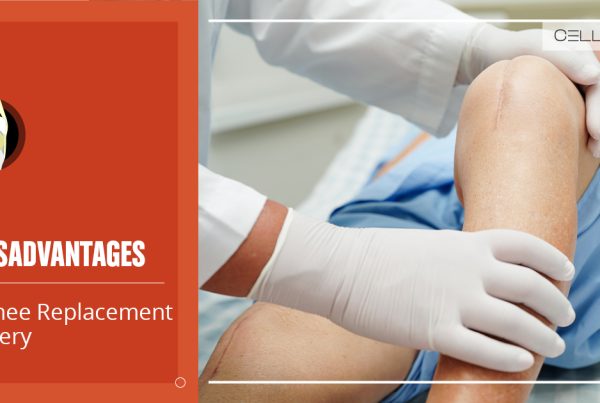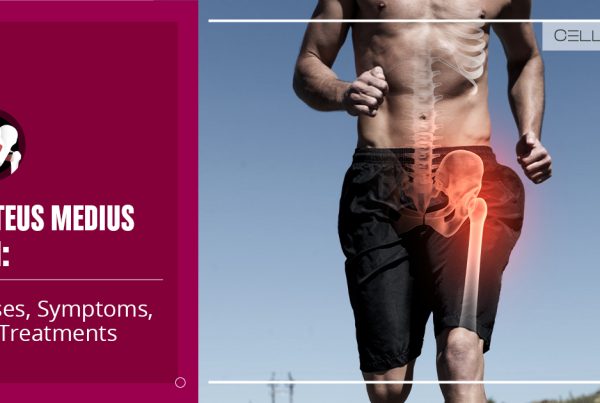Published on: September 26, 2019 | Updated on: November 5, 2024
Table of contents
- Intro
- Anatomy of the Coronary Ligaments of the Knee
- Signs and Symptoms of Injury to the Coronary Ligaments of the Knee
- Causes of Pain in the Coronary Ligaments of the Knee
- Warning Signs: When to See Your Doctor
- Diagnosis of Injury to the Coronary Ligaments of the Knee
- Conventional Treatments for Injured Coronary Ligaments of the Knee
- Regenerative Therapy and Coronary Ligaments of the Knee
- Preventive Measures
The coronary ligaments of the knee are tiny, very fragile connective tissues that help create healthy interaction between all of the tissues that make up the knee.
By controlling the outward and inward movements of the knee, coronary ligaments help to ensure that the knee’s biomechanics are not awkward or damaging to its soft tissues.
Pain in the coronary ligaments of the knee can be caused by injuries, reduced range of motion, and instability. Many treatment options are available to people suffering from coronary ligament issues, and regenerative therapies can help boost the results of all of these treatment options.
Anatomy of the Coronary Ligaments of the Knee

Ligaments are bands of fibrous tissue which connect joints and stabilize them to one another. By connecting various tissues in the knee to the bone, the ligaments of the knee ensure that there is a healthy interaction between the soft tissues, bones, and muscles during movement.
Awkward or irregular interaction can be due to damaged ligaments and can cause soft tissue, muscle, or bone damage which may lead to chronic pain if left unchecked.
When we talk about the coronary ligaments of the knee, we are referring to two small bands that connect the menisci to the edges of the tibial plateaus. The menisci are pieces of cartilage that cushion and protect the bone ends.
In the knee, the menisci are sandwiched between the upper (femur) and lower (tibia) leg bones. The coronary ligaments are found on the sides of either knee. The coronary ligaments which are on the inside of the knee (inner thigh) are referred to as the medial coronary ligaments.
Those which are found on the outside portion (outer thigh) of the knee are known as the lateral coronary ligaments. There are only two of each found in each knee.
Signs and Symptoms of Injury to the Coronary Ligaments of the Knee
Due to their relative location to each other, coronary ligament injury has very similar symptoms to issues associated with the menisci. It can be difficult for doctors to differentiate between the more common cartilage meniscus damage and thus, coronary ligament injury is often incorrectly diagnosed.
Some signs to watch out for are:
- Tenderness along the outsides of the knee.
- Sharp pain during flexion of the knee, especially twisting movements.
- Discomfort at the end of the range of motion of the knee.
- Minor stability issues while side-stepping.
- Placing one leg over the other exacerbates the signs and symptoms above.
Coronary ligament pain is difficult to diagnose due to common problems with similar symptoms, but also due to the lack of swelling and only minor pain at the onset of an issue.
Most knee issues typically induce a swelling reaction, create difficulty bearing a load, or decrease the range of motion of the knee.
Causes of Pain in the Coronary Ligaments of the Knee
Like many other knee injuries, coronary ligament pain typically comes from overexertion of the tissue. While coronary ligaments are protected by a deep nest of other tissues, they are especially susceptible to injury due to their small size and thus, reduced capacity to handle trauma. Some typical inciting events for chronic coronary ligament pain include:
- Lateral and medial sprains of the knee (hyperextension of the knee towards the inside or outside of the body).
- Trauma to the inside or outside of the knee.
- Damaged neighboring tissues.
Though these events are typically the cause of coronary ligament injury, something as simple as sleeping on the knee awkwardly can be enough to upset its fragile biomechanics and add unnecessary strain to the coronary ligaments.
Over time, these new biomechanics can exacerbate the coronary ligaments and reduce the quality of the tissue, inciting pain or any of the other signs and symptoms listed above.
Warning Signs: When to See Your Doctor
Be aware of the warning signs, and do not delay going to the doctor to prevent injury. Call your healthcare professional if you experience:
- Persistent pain that lasts over a few weeks despite resting, using icepack, and over-the-counter medication
- The pain limits the ability to perform daily activities.
- There is swelling or inflammation around the site
- If the knee gets red or feels warm to touch
- If the knee feels like it’s giving way or getting unstable
- If you are unable to bend and completely straighten the knee and feel like it is locking
- You have a history of injuries or health conditions like arthritis.
- You have a fever or pus that oozes out of the open wound on the knee.
Diagnosis of Injury to the Coronary Ligaments of the Knee
A typical consultation for a patient who is thought to have injured their coronary ligaments will begin with a physical examination. The doctor will begin their physical examination by palpating the areas around the knee. They will apply pressure to the sides of the knee to try to pinpoint the most tender areas.
Once the tender areas are located, the doctor will have the patient perform a series of stretches that target specific portions of the knee to further evaluate the cause of the issue. For coronary ligament pain, these stretches will try to flex the inner and outer portions of the knee. This is known as McMurray’s test.
McMurray’s Test
McMurray’s test is a simple way to check the tissues of the knee for any problems. The procedure involves a series of stretches meant to induce a state of flexion in various portions of the knee.
- A patient will lay on their back with the legs outstretched.
- The doctor will grab ahold of the foot, and upper portion of the knee while pushing the lower leg towards the upper body.
- The doctor will rotate the lower leg using the knee as an origin point for the movements.
- Finally, the doctor will pull on the foot as they lower the leg to be parallel with the rest of the body.
As the doctor performs these motions, they will ask their patients if they are experiencing any pain and will listen for pops and cracks in the knee. The doctor will look out for a reduced range of motion or tenderness in certain positions as well.
McMurray’s test can help a doctor further pinpoint the site of an injury, but to be completely sure that the issue stems from the coronary ligaments, they will have to use one of the various imaging technologies.
X-rays, CAT scans, and MRIs are used to view the state of the bones, muscles, and soft tissues within the knee to identify the problem area. Once the doctor is satisfied with their diagnosis, they will typically move on to recommending one of several conventional treatment options.
Conventional Treatments for Injured Coronary Ligaments of the Knee
Typically, doctors will stay within the boundaries that insurance providers have set forth. Conventional treatment options for pain caused by the coronary ligaments of the knee include:
- RICE therapy
- Physical therapy
- Medication
- Surgery
RICE Therapy
RICE is a proven method for helping flare-ups of pain throughout the body. RICE stands for Rest, Ice, Compression, and Elevation. A patient is asked to rest the injured area.
They can either reduce the load placed on the area using one of several tools such as a knee brace, splint, or cane, or the patient will be asked to stop moving completely. Applying ice to the area desensitizes the nerves thereby reducing the pain and calming any inflammation which may be causing it.
Compression helps provide further stability to the affected area and elevation reduces the blood flow which may cause throbbing pain.
Physical Therapy
Physical therapy involves a guided course meant to help retrain the patient to move in ways that do not induce a pain response. Alongside this restructuring of a patient’s biomechanics, physical therapists will also try to strengthen the muscles which surround the affected area.
By strengthening these anterior muscles, the load which is placed on the coronary ligaments and the tissues they help to connect is reduced. By reducing the load that these ligaments have to bear, a patient can feel more comfortable performing their day-to-day activities.
Medication
Over-the-counter medications are typically the first line of defense against problems involving the knee. By reducing swelling, these medications can eliminate most of the inciting problems which cause pain.
This is not the case with coronary ligament issues. While over-the-counter medication may help some of the symptoms, coronary ligament pain is not typically caused by swelling, but by the movement in the knee.
Doctors can prescribe stronger medication meant to reduce the nerve response in their patients, but these medications come with dangers of their own.
Surgery
Most ligament problems do not require surgery, though if these ligaments are completely torn or stretched beyond repair, reconstructive knee surgery may be the only option. Along with being costly, surgery will often require long recovery periods and the use of medication and a physical therapy routine. Surgery is typically the last resort for any type of ligament injury.
While conventional treatments do have their place in the world of medicine, oftentimes, patients do not have the resources to cope with the long recovery periods and expensive medications being used.
Additionally, most of these treatments are for pain but not the causal issue. When conventional treatment options do not seem the correct route, patients seek out alternative treatments such as regenerative therapy.
Regenerative Therapy and Coronary Ligaments of the Knee
By repairing the degenerated tissues in the knee, regenerative therapies not only treat the inciting pain but the cause of it as well. These treatments have been around for over half a century and have been used worldwide to treat soft tissue, muscle, and bone ailments.
By using the body’s own healing factors and amplifying them, regenerative therapies can help reconstruct almost any tissue in the human body. They are usually performed as an outpatient procedure, meaning you can go home right after the process.
At Cellaxys, we apply two types of regenerative therapy – platelet-rich plasma (PRP) and cell-based therapies.
PRP Therapy
PRP therapy involves harvesting blood, processing it, and reinjecting the processed blood into a site of injury. This helps incite the body’s natural healing systems to repair damaged tissues. Platelets are healing components that release 10 Growth Factors to stimulate the growth of healthy tissues.
Once isolated and reinjected into the problem site, platelets send out chemical signals which help the body locate an injury and repair it more than it naturally could. They also produce a sticky, web-like structure called fibrin that serves as the scaffolding for the development of new tissues.
PRP takes about 45 minutes to complete. It has been a popular treatment for spine, orthopedic, and sports injuries.
Cell-Based Therapies
More commonly known as stem cell therapies, cell-based therapies involve extracting “autologous” tissues from the patient, processing them, and reinjecting them into the site of an injury. There are two types of cell-based therapies:
- Minimally Manipulated Adipose Tissue (MMAT) Transplant. It involves replacing your damaged cells with the healthy cells of your adipose (fat) tissue. MMAT can be performed in multiple locations at the same time if your doctor suspects the need.
- Bone Marrow Concentrate (BMAC). This procedure replaces damaged cells with highly concentrated cells from your bone marrow.
For both procedures, the doctor will put you under anesthesia. These procedures are completed in about 1.5-2 hours. The doctor uses a live X-ray (fluoroscopy) or ultrasound for all transplant locations to ensure the right spot.
Patients typically experience swelling and soreness after injection in PRP and cell-based therapies, which go away within a week. Once the swelling does, the therapies are believed to continue repairing and rejuvenating damaged tissues for 6 months. When used in unison, these therapies have been known to relieve pain for upwards of a year.
Preventive Measures
Preventing pain in coronary ligaments is crucial to keeping the joint healthy and mobile. Here are some measures you can take to strengthen the joint and reduce the chances of injuries and falls.
Exercises
Light exercises like swimming, walking, and cycling can help strengthen the muscles around the knee, making the joint more stable and supportive.
Work on the quadriceps and hamstrings, which build strength and help in knee stability.
Never Skip Warmup
Remember to warm up before running or any other exercise. Warm-up exercises prepare the body for activity, often preventing pain and aches afterward.
It increases blood flow through the muscles and improves flexibility. It can include movements like arm circles, leg swings, and lunges.
Go for Low Impact Exercises
Low-impact activities can reduce the strain on the knee and ligaments. Elliptical training and other cardio exercises have several benefits for the knee. However, high-impact exercises or sports like jumping, playing basketball, and soccer can further aggravate the issue.
Avoid Prolonged Kneeling
You should avoid prolonged kneeling. Of course, you can’t avoid sitting down to clean the floor or bending over for some chores, but always use knee pads or cushioning support to reduce the pressure.
Try different positions that minimize the requirement for kneeling and relieve the pressure from the knee.
Sources
Footnotes
- Lougher L, Southgate CR, Holt MD. Coronary ligament rupture as a cause of medial knee pain. Arthroscopy: The Journal of Arthroscopic & Related Surgery. 2003;19(10):e157-8.
- Hudes K. Two cases of medial knee pain involving the medial coronary ligament in adolescents treated with conservative rehabilitation therapy. The Journal of the Canadian Chiropractic Association. 2011;55(2):120.
- Stork A, Feller JF, Sanders TG, Tirman PF, Genant HK. Magnetic resonance imaging of the knee ligaments. InSeminars in Roentgenology 2000 (Vol. 35, No. 3, pp. 256-276). WB Saunders.
- DeChellis DM, Cortazzo MH. Regenerative medicine in the field of pain medicine: Prolotherapy, platelet-rich plasma therapy, and stem cell therapy—Theory and evidence. Techniques in Regional Anesthesia and Pain Management. 2011;15(2):74-80.
- Alderman DD, Alexander RW. Advances in regenerative medicine: high-density platelet-rich plasma and stem cell prolotherapy for musculoskeletal pain. Pract Pain Manag. 2011;11(8):49-63.
References
- Knee Ligaments. Knee Pain Explained. Accessed 2/26/2024.
- Coronary Ligaments of the Knee. Physiopedia. Accessed 2/26/2024.
- Coronary Ligament Sprain. Virtual Sports Injury Clinic. Accessed 2/26/2024.
CELLAXYS does not offer Stem Cell Therapy as a cure for any medical condition. No statements or treatments presented by Cellaxys have been evaluated or approved by the Food and Drug Administration (FDA). This site contains no medical advice. All statements and opinions are provided for educational and informational purposes only.
Dr Pejman Bady
Author
Dr. Pejman Bady began his career over 20 years ago in Family/Emergency Medicine, working in fast-paced emergency departments in Nevada and Kansas. He has served the people of Las Vegas as a physician for over two decades. Throughout this time, he has been met with much acclaim and is now the head of Emergency Medical Services in Nye County, Nevada. More about the doctor on this page.
Dr Pouya Mohajer
Contributor
Pouya Mohajer, M.D. is the Director of Spine and Interventional Medicine for CELLAXYS: Age, Regenerative, and Interventional Medicine Centers. He has over 20 years of experience in pain management, perioperative medicine, and anesthesiology. Dr. Mohajer founded and is the Medical Director of Southern Nevada Pain Specialists and PRIMMED Clinics. He has dedicated his career to surgical innovation and scientific advancement. More about the doctor on this page.









